The Best Swords for 15 Different Scenarios

What’s in this article?
Not all swords are created to be equal and choosing the best sword depends on the situation. Swords have evolved from sickle-like recurved bladed tools to massive two-handed sweepers, before reverting back into thin and lightweight single-edged curved saber blades. The moral of this evolution story is that adhering to a specific blade design did not work well historically.
As a result, there are many different sword designs – some better and some worse. In this article, we explore 15 different historical fighting scenarios and suggest the best sword in that situation. We also delve into the debate about whether or not there is a “best” sword.
Is There a Best Sword?
Simply put, there is no best sword in history. If there had been such a thing, why would swords continue to evolve and improve worldwide, century after century?
Just as you wouldn’t expect a sports car to drive through thick mud without getting stuck or a truck hauling a heavy load to navigate twists and turns easily, you can’t expect to find a sword superior to all the others.
Each sword is designed for a different purpose. Some are better in specific situations while others are suited for different scenarios.
1. Best for Slashing – Katana

The Japanese Katana is one of the best, if not the best slashing swords available due to the stability, flexibility, and precision provided by the handle and soft curvature of the single-edge blade.
While double-edged blades are also superb for slashing, single-edged blades allow more room to taper to the edge. This is the case with many curved blades such as the Messer, Cutlass, or a Chinese Liuyedao.
The Katana sword does not outdo many other curved swords in speed, weight, reach, or flexibility, but the precision of the strikes that it provides makes it the best-slashing sword, thanks to the large handle, small pommel, handguard, and forward center of gravity.
2. Best for Thrusting – Gladius

Thrusting is the action where the tip of the blade is used to pierce the target. This is best done with a double-edged straight blade which tapers gradually from the guard to the tip or from the end part of the blade. This sword is excellent for attacking enemies with armor as it pierces through armor, gaps of the armor, or through flesh and bones.
There are many blades that are great for thrusting in combat, including the Roman Gladius, Jian, Arming Sword, or a larger Longsword.
The best weapons made for thrusting but have various disadvantages are the Sidesword, Rapier, and Smallsword. All of these swords fall short in an actual battle with armor because they only do well in battles with specific rules such as not rushing the opponent, not using pommel strikes, and more. While the rapier would certainly win a thrusting competition due to its tapered blade that is designed to pierce through the target, in a real battle, the sword could be avoided or easily disarmed.
3. Best for Cutting – Chinese Dadao
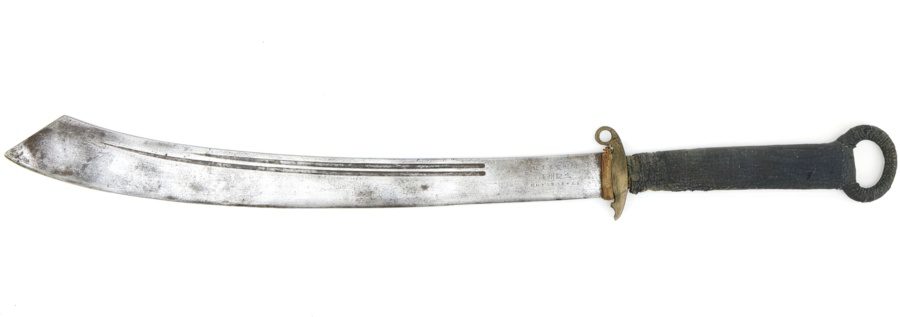
Cutting strikes are different from slashing attacks as they are made with the intention of cutting through instead of slashing and revealing a gaping wound that might be lethal. The best cutting swords have broader and sturdier blades with a forward center of gravity that focus all of their power on the single-edge blade.
Based on these requirements, the Chinese Dadao is the best cutting sword as it has a single-edge blade made for cutting and a spike that can be used for bashing. This makes it a deadly and brutal sword. There are also other two handed swords that are excellent for cutting which are the Dacian Falx, Rhomphaia, Scottish Claymore, and even a Turkish Kilij with a broadened blade.
4. Best for Infantry Combat – Arming Sword

The best swords for a line formation consisting of thousands of armored infantrymen are short swords. These sturdy blades range around 24 to 31 inches (60 to 80 cm) allowing them to be easily maneuvered in tight, compact melee positions, and preventing injury to friendly units.
While the Gladius is usually seen as the standard for the best infantry formation sword due to its success in history, the Arming Sword is the improved version of it. This medieval sword has several perks – a crossguard that doesn’t hinder maneuverability, long blade that tapers like the Gladius, pommel that can be used for bashing, and versatile enough to be used with or without a shield.
5. Best for Cavalry – Scimitar
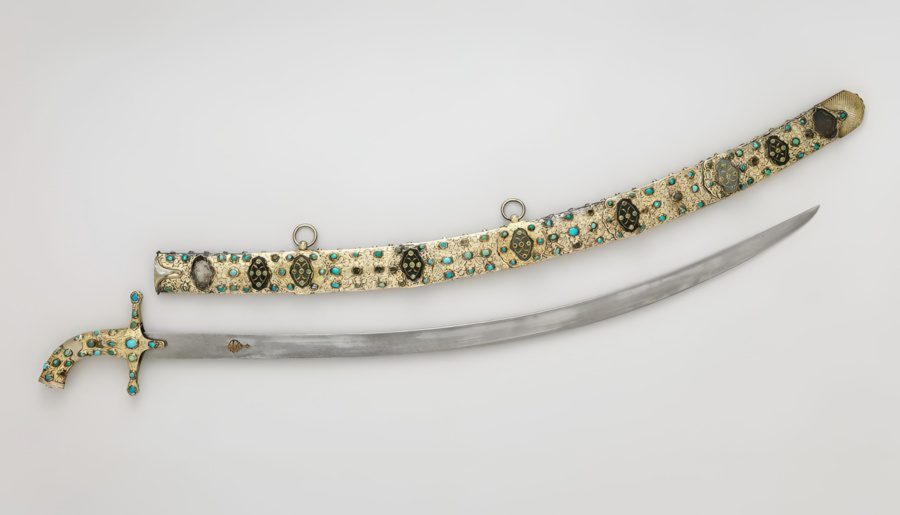
Cavalry swords are generally single-edged and curved. The first curved blades in history were made so cavalry troops can use slashing attacks while they remain mounted on their horses. While single-edged curved blades can cut just as well as straight double-edged blades on foot, the curved swords combined with the speed and momentum of a horse makes them superior.
The best cavalry swords are the curved, one-handed Scimitars and Chinese Dao swords. The curved blades can cause significant wounds, even through gaps in armor. Additionally, they offer handguard protection and are unlikely to remain embedded in their targets after a strike. Late European sabres with a softer curve would also be ideal for battles against unarmored opponents.
6. Best for One-on-One Combat (Without Rules) – Longsword
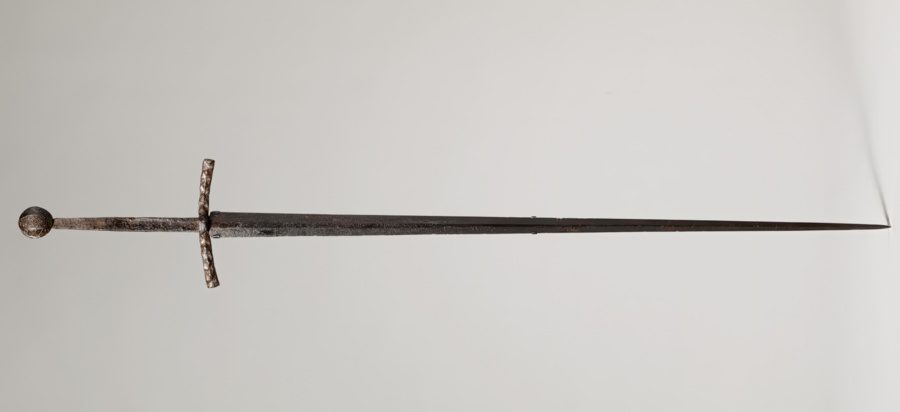
The best one on one sword where the melee sword fight can go in any direction and no rules need to be followed whatsoever except survival alone, is the European Longsword. It is the most powerful weapon and legendary sword that a swordsmith could construct that is still being taught in modern HEMA (historical European martial arts).
The European longsword is a type of sword that can be wielded with one or two hands. It offers a reach advantage over most bladed weapons while remaining lightweight and a crossguard that offers significant protection, and a sturdy pommel for bashing. The center of gravity is near the hilt, allowing for fast strikes. It can be used on foot or while mounted, and the blade can pierce through gaps in armor.
The Longsword is definitely one of the most superior and strongest swords in history because of how versatile it is in almost any type of fighting situation.
7. Best for Duels – Rapier
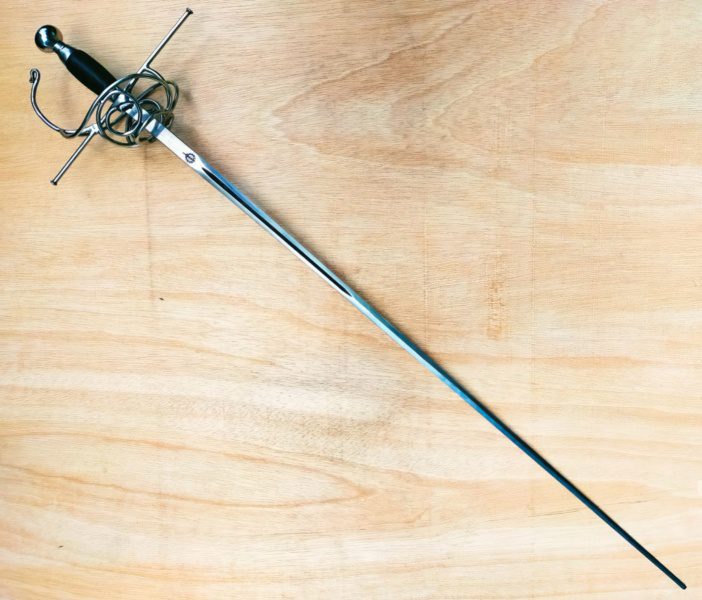
A sword duel is a combat where certain rules must be followed, such as not touching or pushing enemy blades aside, not rushing opponents, and disarming them. In these scenarios, certain types of dueling swords excel and outperform others.
The long European Rapier is considered the best sword for rule-based duels. It has a long reach that can easily damage an opponent’s hands if they are not adequately protected. It can deflect other enemy dueling swords and quickly execute a counterattack that can easily pierce through an unarmored opponent.
8. Best for Heavy Armor – Dadao
Swords in history were not designed to deal with heavy armor. Despite that, swords have performed well against heavy armor as they can inflict blunt damage by denting armor which may not have been as strong then.
The Chinese Dadao is the best sword to use against heavy armor. It is one of the most durable swords due to its broad and single-edged design. While it may not be the fastest or most flexible, it can dent the strongest of armors made with modern steel. While the Dadao relies on brute force, the Arming or Longsword would be the best choice for dealing with heavy armor as it can pierce through the armor or armor gaps.
9. Best for Intimidation – Ngombe Ngulu
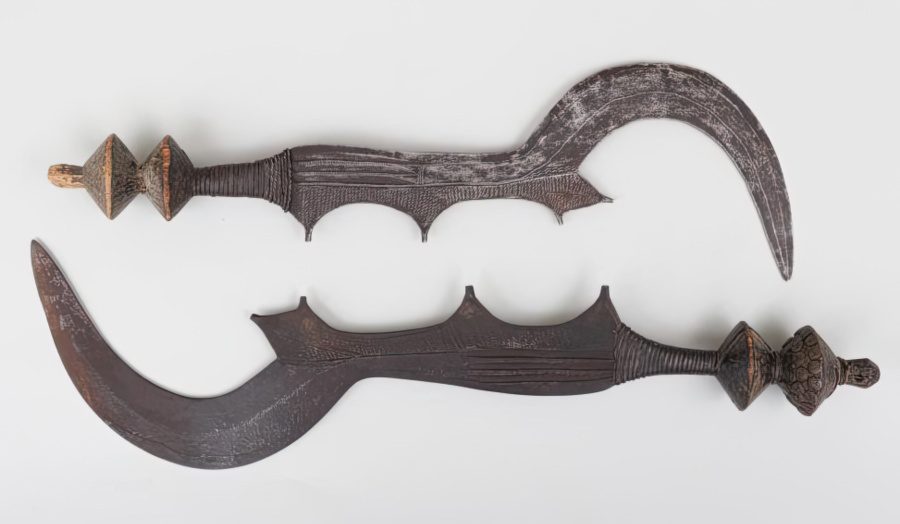
While a Japanese Sword held by a samurai can be both intimidating and cool, no blade comes close to being as terrifying as African swords. The best among them is the African Ngombe Ngulu.
The Ngombe Ngulu is a source of inspiration for many anime, video games, and movies thanks to its unique and terrifying design. It has multiple sharp-edged prongs along its blade with a recurved hook as a blade tip that is effective for cutting. What makes the Ngombe even scarier is that it was used in gruesome executions.
10. Best for Dual-Wielding – Chinese Niuweidao
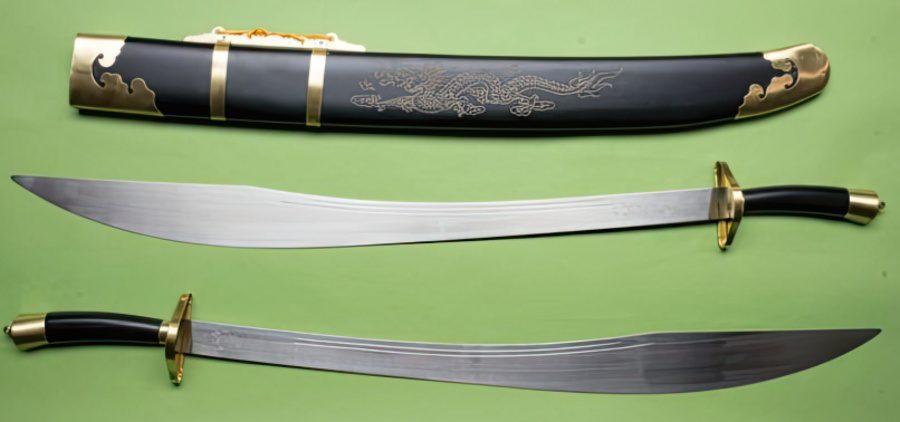
Dual-wielded swords are a highly debated training method that is often questioned for its effectiveness. Typically, smaller daggers, Chinese Butterfly Swords, or Japanese Sai Swords are considered the best weapons for dual-wielding.
In our opinion, the best dual-wielding swords are the Niuweidao blades. These curved swords, with a broadened blade tip, were used effectively against unarmored opponents. They have the average length of a sword but offer a significant reach advantage over other dual-wielding blades. Additionally, the Niuweidao’s handguard can be split in half, allowing for two swords to be carried in a single scabbard.
11. Best Range Advantage – Zweihander
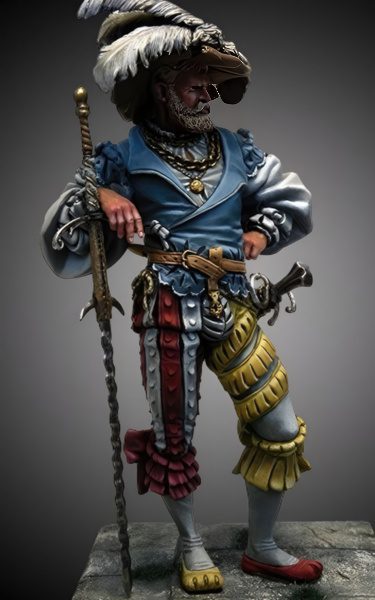
Having a certain range advantage over your enemies’ swords can often lead to victory. Even a modern HEMA practitioner can use a 2-inch (5 cm) advantage in their favor to win a duel. While range is, of course, very necessary, some swords have so much reach advantage that it makes them situational blades.
The best sword for increasing one’s range without compromising the user’s defense would be the European Zweihander, Claymore, Spadone, Chinese Changdao, or the Japanese Nodachi. These great swords, while not the best for individual battles, would be perfect for striking from afar and behind enemy lines.
12. Best for Utility Tasks – Machete
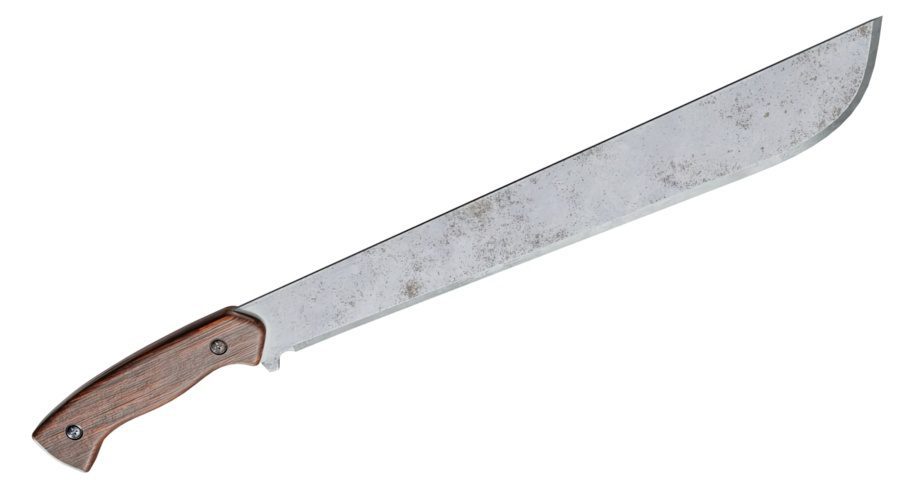
Some swords were necessary for more than just fighting; they were used for daily tasks such as cutting through thick forests, bushes, jungles, trees, ropes, and even digging the ground when necessary.
The best types of swords for these tasks are machete-like swords due to their sturdy blades that maintain their shape. Other options include the cutlass used by sailors; xiphos and falcata blades wielded by ancient warriors; Nepalese kukri, Turkish yatagan, and especially Filipino swords which feature traditional blade designs.
13. Best for Stealth – Cane Sword

Although swords have been used as primary or secondary weapons of war, some swords have been created with the sole intention of being stealthy and hidden. One of the most mysterious and stealthy blades in modern media is the Ninjato used by the ninja, but this sword still has to be carried in a sheath and is bound to be noticed.
That is why the best swords for stealth are European Cane Swords and Japanese Shikomizue. These sharp carbon steel blades are sheathed inside a cane that can be used for walking or disguised as part of an outfit.
14. Best for Fast Attacks – Shashka
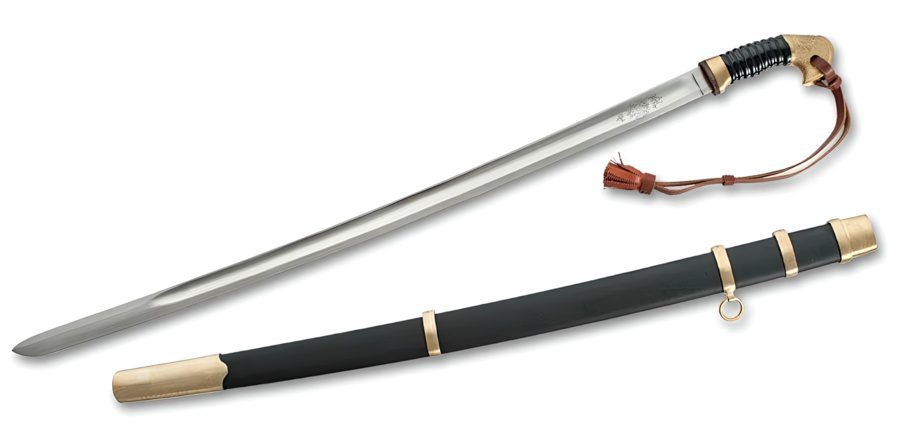
Sometimes, a quick draw is of the essence in saving one’s life. This is where the blade is quickly drawn from its sheath to land a strike on the enemy. Generally, samurai swords are one of the best for these situations, thanks to the unique way they are carried upside-down while sheathed.
However, the best sword to land a quick attack is the Shashka sword. This one-handed and guardless weapon has been tested and proven to be a much faster weapon than Japanese blades. Despite being the same length, it is lighter than a Katana due to its thinner blade that can deliver a clean and deadly cut, allowing for the fastest strikes.
15. Best Protection – Basket Hilted Broadsword

Protecting one’s hand is crucial in a sword fight, as even deadly swords become useless once the hand wielding them is injured. With the decreased use of armor during the Renaissance era, the need for protecting the sword user’s hands became even greater.
That is when swords that can protect the wielder’s hand appeared. Basket hilted swords or broadswords offer the most protection to the hands of their user. Like the Indian Gauntlet Sword, some basket guards limit the sword’s versatility. This has led many sword enthusiasts to choose swords with crossguards for this purpose.




